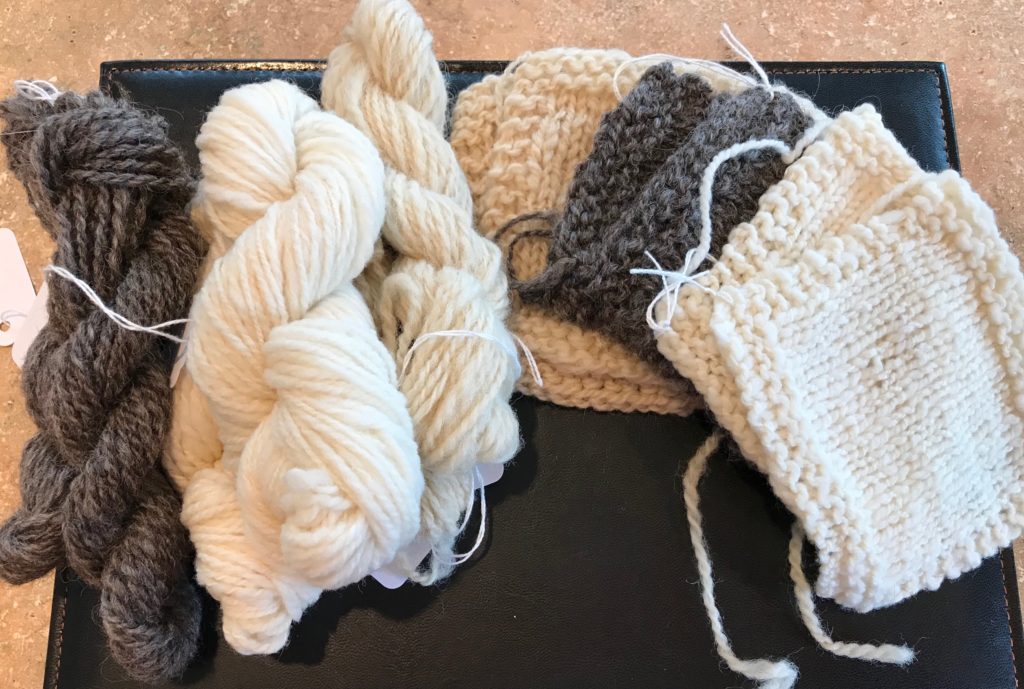
I belong to the Yaquina Fiber Arts guild in Toledo, Oregon, and a couple of the other women in the group were complimenting me on my spinning. They asked if I had been spinning long, and I said just over a year – I started in February 2017. They then commented that I must spin A LOT. And I guess they’re right – I do spin a lot. (Fun Fact – It was this week a year ago that I bought my Ashford Joy 2. My own wheel! Huzzah!)
This post brings us back to my breed study. I looked at three breeds recently, all vastly different.
Finnsheep
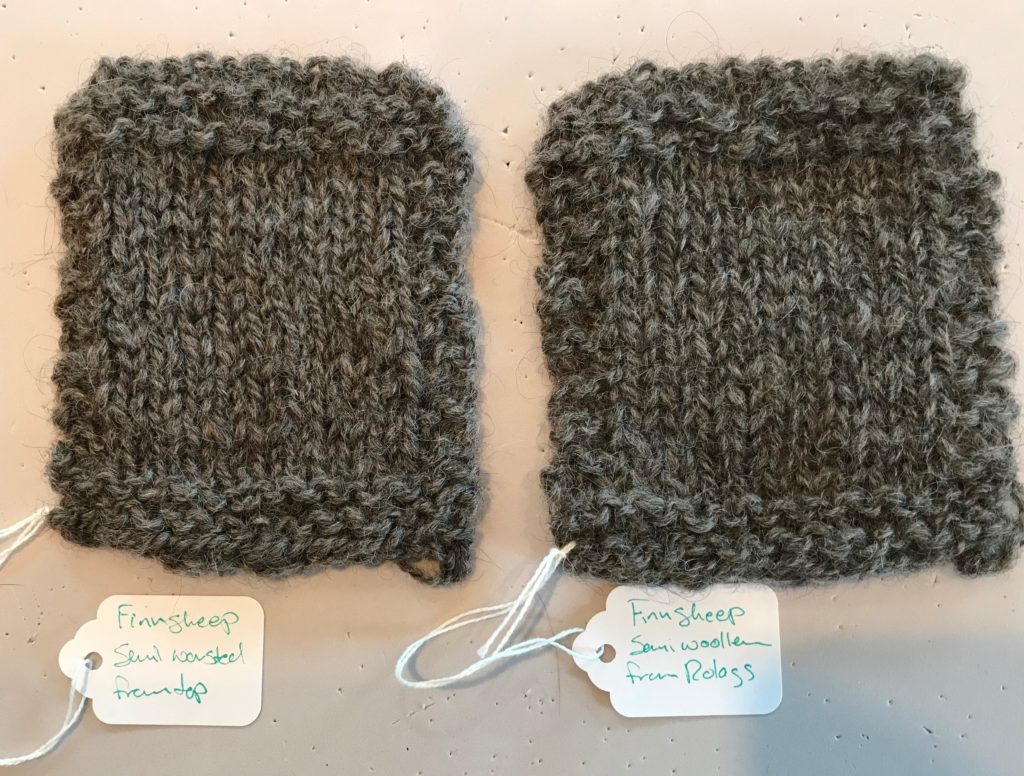
Finnsheep, or Finn for short, is (no surprise here) a Scandinavian breed. My sample was lovely grey top – as usual I carded half into rolags. I found it challenging to get the right setup on my wheel for both long draw and short forward draw, as the fiber is quite unexpectedly slick. Soft, yes, but also slippery.
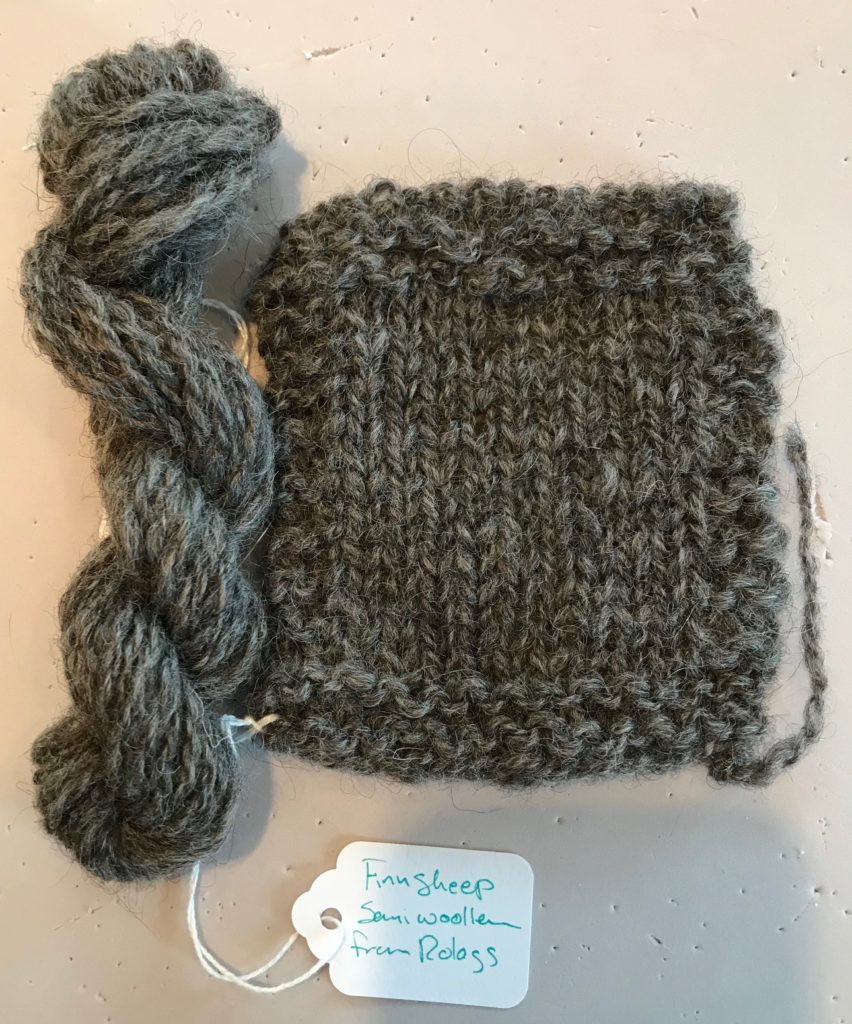
I found that the semi-woollen sample was still quite smooth, and knitted up nicely into an airy swatch. It’s not nearly as “fluffy” as some other fibers. The semi-worsted swatch is very smooth and soft, and could probably be worn against the skin. This fiber sample was in the middle of the micron range for Finn, so I suspect that a finer fiber would be very comfortable against the skin.
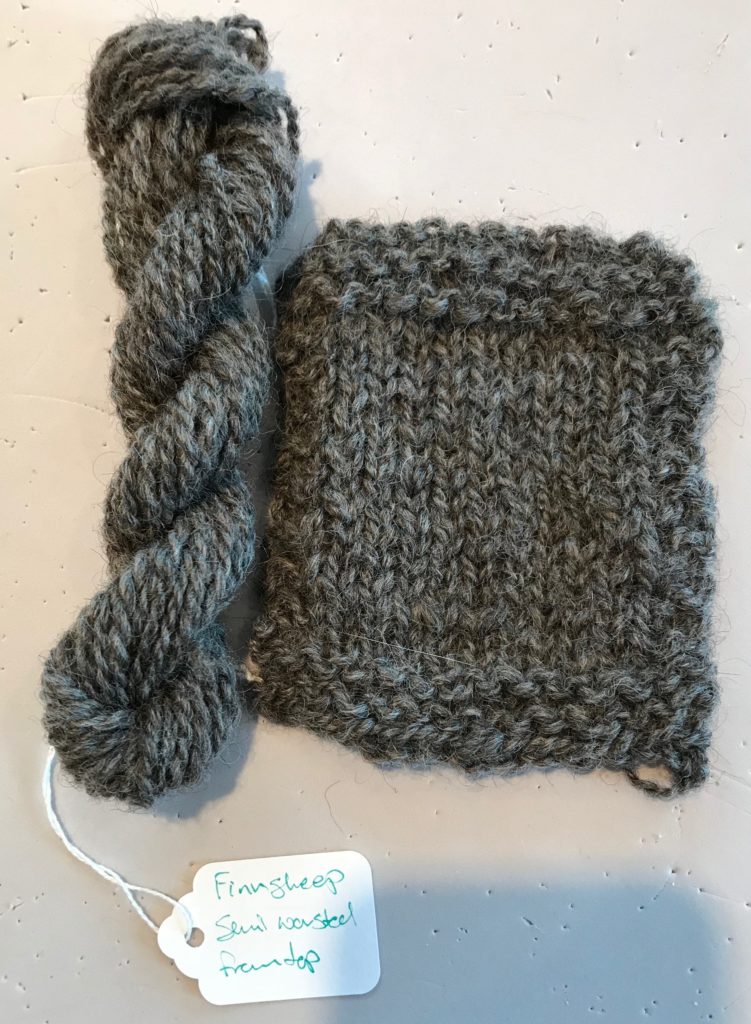
What surprised me about working with the Finn was how frustrating I found it. When doing short-forward draw, my most comfortable spinning method, it took several tries to get the brake band on my wheel set in such a way that I didn’t feel like the yarn was flying out of my hand. I used my 8:1 ratio, which I usually find quite comfortable as well, and it was just…not as much fun as I had hoped. I could have been having an impatient or off day, for sure – and Finn is not a “toothy” fiber by any means. I definitely learned a lot while sampling it, and I am looking forward to trying again. The good news is that I have 4 oz. from the Three Waters Farm Top of the Month Club Fiber Shipment, so I have plenty more to play with!
Eider
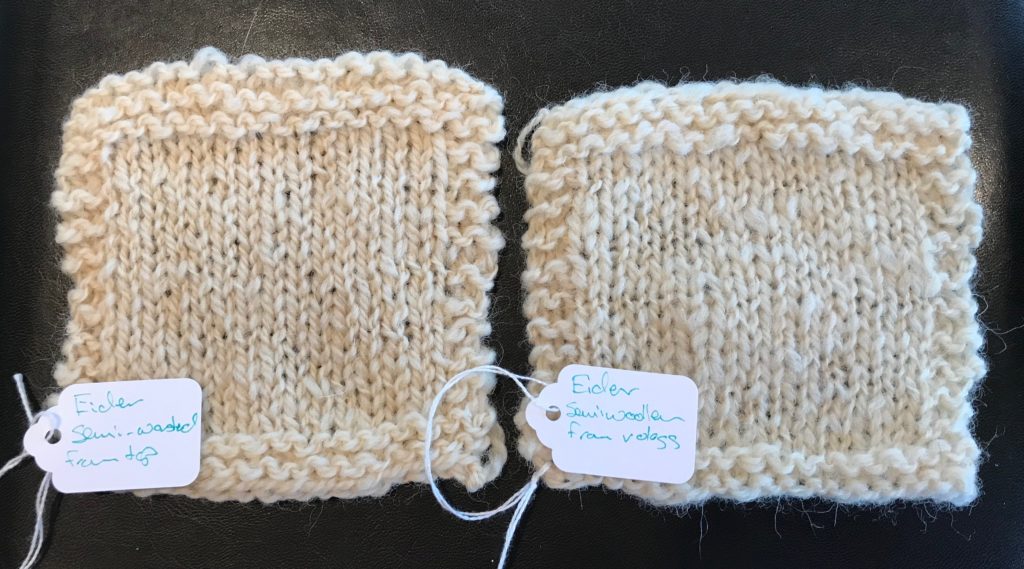 Eider is a German breed and has many other names, including Oldenburg White Head and White-headed Marsh. My personal favorite for sheer unattractiveness is German White-headed Mutton. I’m so glad that someone saw fit to select additional monikers for this lovely sheep. Unfortunately, this breed is not listed in the Fleece and Fiber Sourcebook so I had to take to the internet to learn about it.
Eider is a German breed and has many other names, including Oldenburg White Head and White-headed Marsh. My personal favorite for sheer unattractiveness is German White-headed Mutton. I’m so glad that someone saw fit to select additional monikers for this lovely sheep. Unfortunately, this breed is not listed in the Fleece and Fiber Sourcebook so I had to take to the internet to learn about it.
The Eider is a dual-purpose sheep, bred for both meat and wool production. It was derived from breeding several English breeds to native German sheep, and it grows a long rough fleece. Although the fleece is classified as white, it is kind of a dirty white – my sample had almost a yellow hue to it. This isn’t a complaint in any way – anyone who has looked at “white fleece” of several breeds knows that it’s a relative term. However, it is hard to tell from the photos, so I wanted to note the color. As I was spinning it I found it to be closest to Whitefaced Woodland in terms of other breeds I have spun as part of this study.
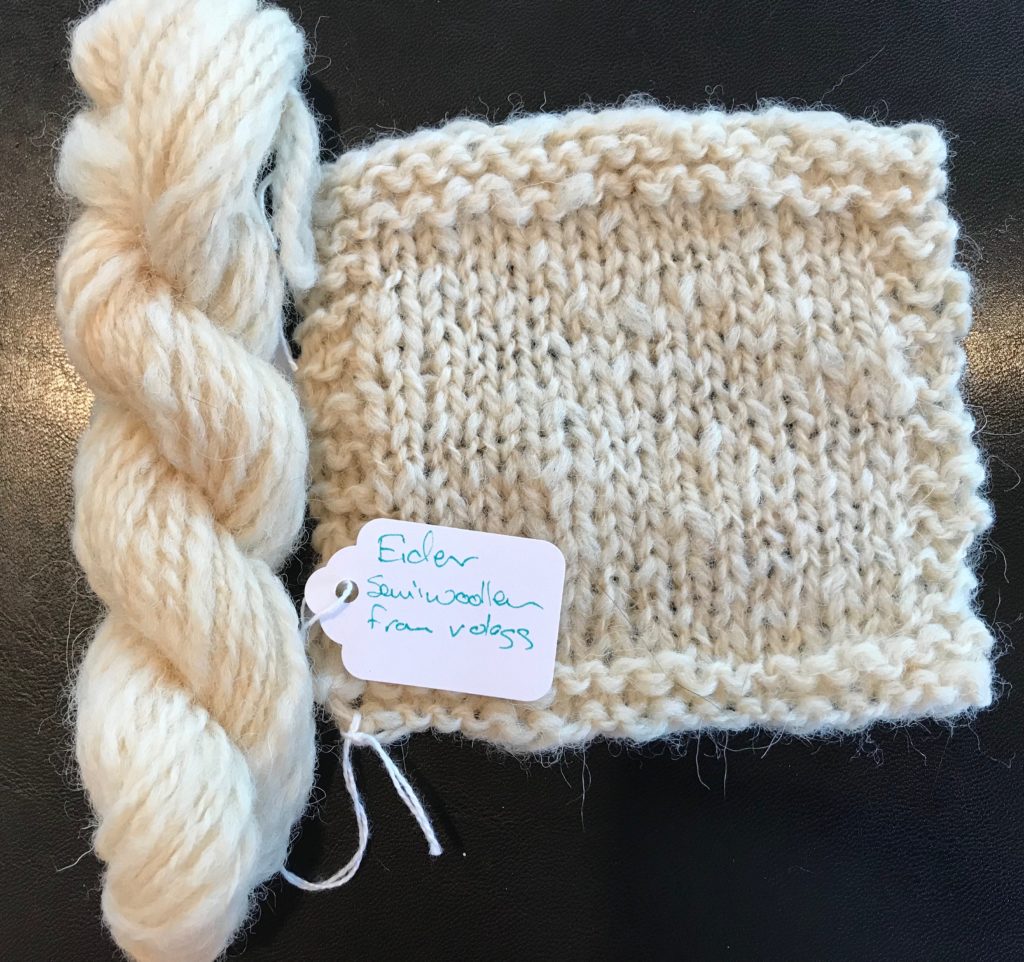
This wool was a dream to spin long draw from rolags. It holds together beautifully, and I don’t recall having any breaks as I went. It is fluffy and airy, and although it’s not next to skin soft it would be great for outerwear.
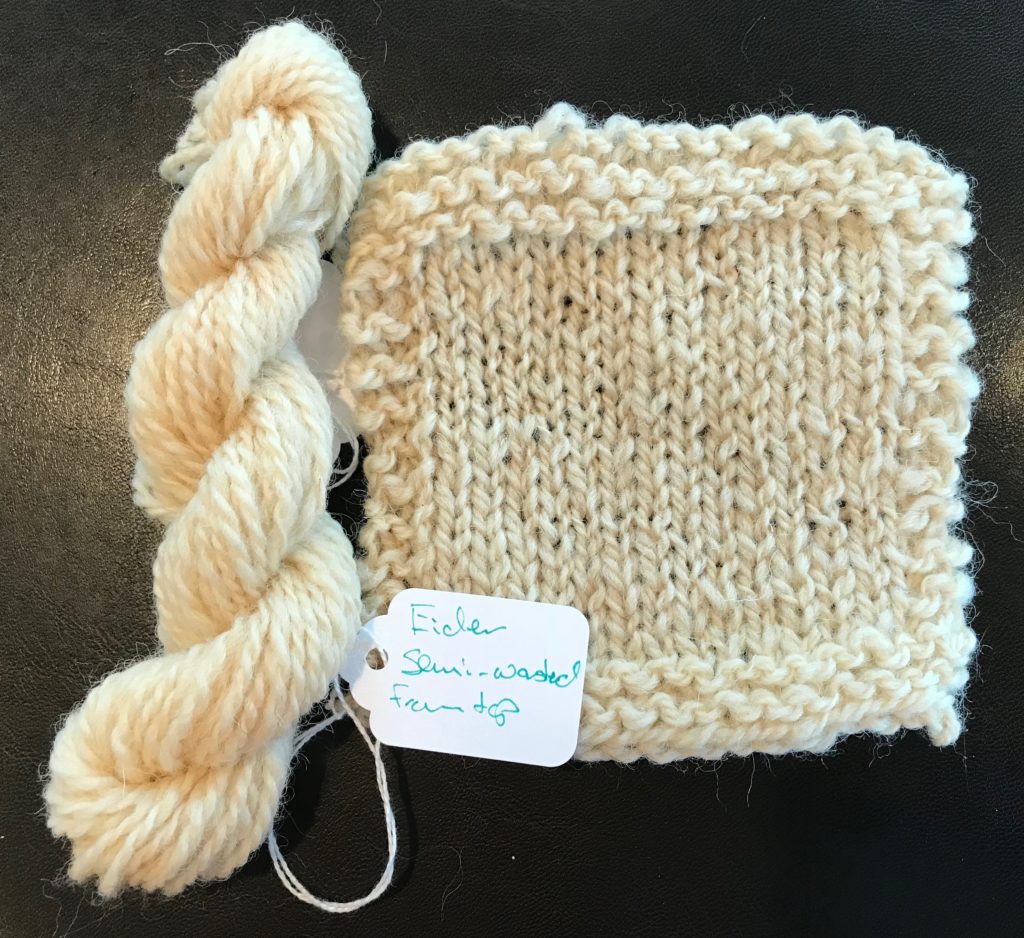 I also found spinning this breed in a semi-worsted style to be very pleasurable. The resulting yarn was lovely to knit as well, and the stitch definition is very nice. Both swatches bloomed a bit with blocking, filling in some of the gaps and creating lovely fabric. Though the semi-worsted swatch is smoother, I suspect that it is still mostly outerwear worthy.
I also found spinning this breed in a semi-worsted style to be very pleasurable. The resulting yarn was lovely to knit as well, and the stitch definition is very nice. Both swatches bloomed a bit with blocking, filling in some of the gaps and creating lovely fabric. Though the semi-worsted swatch is smoother, I suspect that it is still mostly outerwear worthy.
Rambouillet*
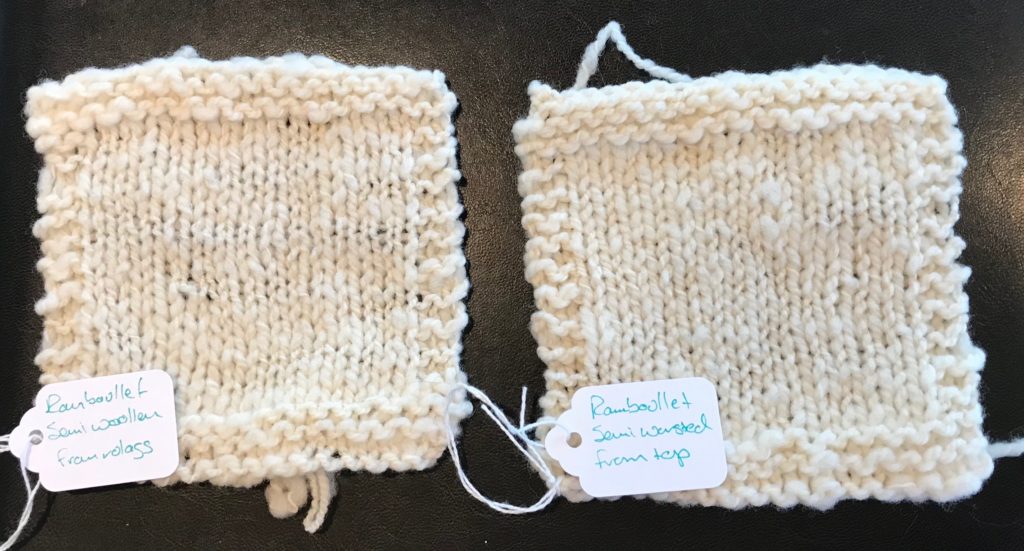 If I had to use one word to describe Rambouillet (ram-boo-yay) fiber, it would be dense. I suspect that is partly because I’ve been working with courser fibers recently, but handling Rambouillet is a little like handling a very nice cotton ball. It isn’t silky but it’s soft as can be. Rambouillets were derived from Spanish Merinos, and are plentiful in the United States and abroad should you want to get your hands on a sample. They also have funny wrinkly faces, which I think are awfully cute.
If I had to use one word to describe Rambouillet (ram-boo-yay) fiber, it would be dense. I suspect that is partly because I’ve been working with courser fibers recently, but handling Rambouillet is a little like handling a very nice cotton ball. It isn’t silky but it’s soft as can be. Rambouillets were derived from Spanish Merinos, and are plentiful in the United States and abroad should you want to get your hands on a sample. They also have funny wrinkly faces, which I think are awfully cute.
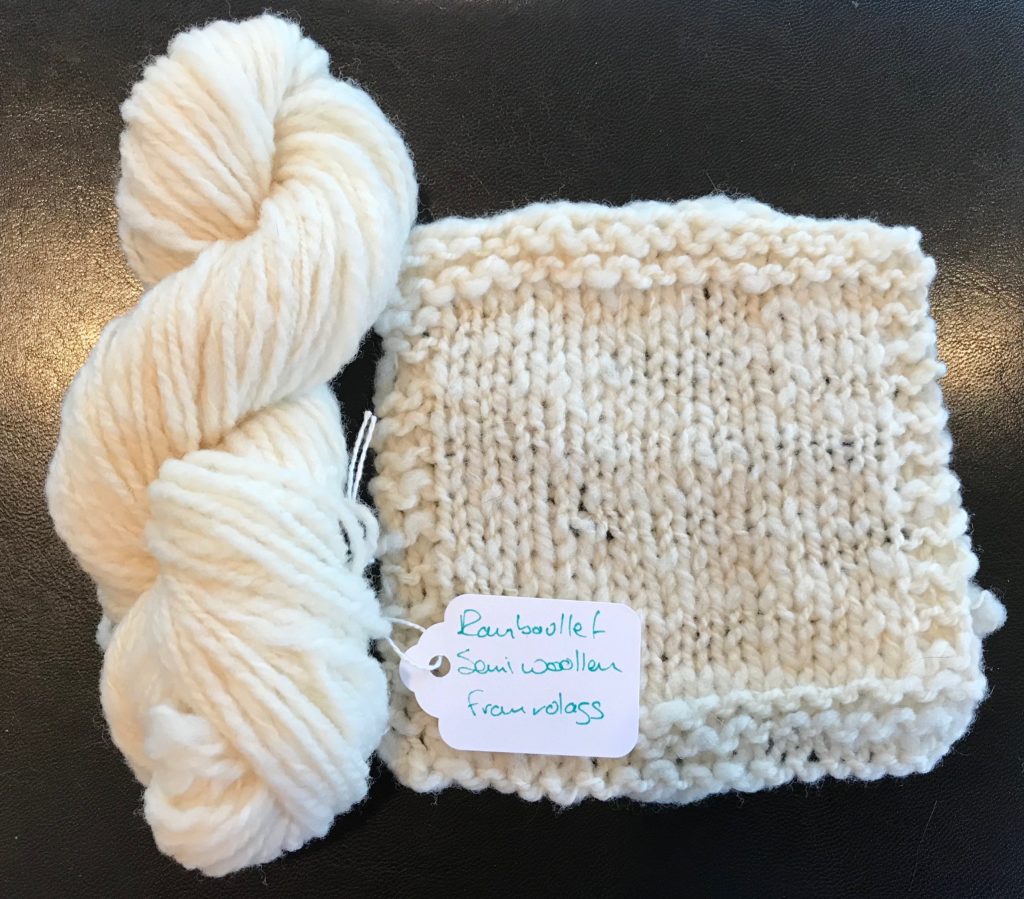 Since this fiber is so soft and the recommendations I read said it is best spun relatively fine, I set the ratio on my wheel to 11:1 for the rolags. Again it took some experimentation to figure out how much twist I needed to put in so the singles didn’t break, and I had some waste while I sorted that out. Once I got it, though, I found Rambouillet to be great to spin using a supported long draw from rolags. The yarn is fluffy, soft, and airy, but the fibers do tend to cling to each other. Rambouillet will felt easily.
Since this fiber is so soft and the recommendations I read said it is best spun relatively fine, I set the ratio on my wheel to 11:1 for the rolags. Again it took some experimentation to figure out how much twist I needed to put in so the singles didn’t break, and I had some waste while I sorted that out. Once I got it, though, I found Rambouillet to be great to spin using a supported long draw from rolags. The yarn is fluffy, soft, and airy, but the fibers do tend to cling to each other. Rambouillet will felt easily.
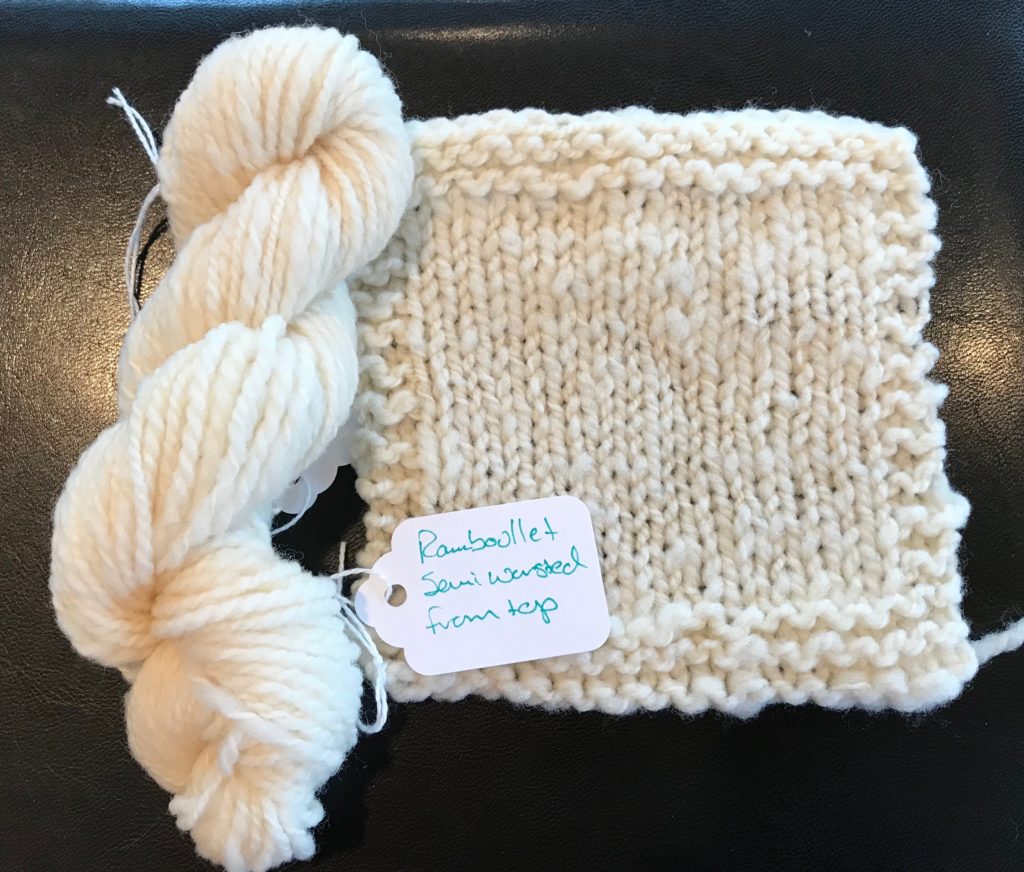 When I switched over to short-forward draw for my semi-worsted sample, I was surprised that I needed to strip my top into multiple pieces in order to handle it easily. The density of the fibers within the top meant that I needed to work with smaller pieces so that I didn’t keep getting too many fibers with each draw. Related to my last post, it is important to note that both my semi-woollen and semi-worsted sample skeins fluffed up A LOT in finishing – I only did the math on my semi-worsted skein, but it went from 54 yards before blocking to 37.5 yards after…this is definitely something I will take into consideration when I work with Rambouillet in the future! Which I will…I love this semi-worsted yarn and swatch. It totally reflects the fiber I started with – dense, soft, and relatively smooth.
When I switched over to short-forward draw for my semi-worsted sample, I was surprised that I needed to strip my top into multiple pieces in order to handle it easily. The density of the fibers within the top meant that I needed to work with smaller pieces so that I didn’t keep getting too many fibers with each draw. Related to my last post, it is important to note that both my semi-woollen and semi-worsted sample skeins fluffed up A LOT in finishing – I only did the math on my semi-worsted skein, but it went from 54 yards before blocking to 37.5 yards after…this is definitely something I will take into consideration when I work with Rambouillet in the future! Which I will…I love this semi-worsted yarn and swatch. It totally reflects the fiber I started with – dense, soft, and relatively smooth.
An Aside
I was talking to my dad on the phone last weekend while I was working with the Rambouillet and he said “how come I’ve never heard of that breed? We love things made of Merino.” My response was something about how I really hadn’t either until I started spinning, even though I’ve been knitting for almost 15 years and I work with wool all the time. Wool is so fascinating, and I am grateful for all of the large and small companies that are bringing breed-specific yarns to the market so that more people can learn about how wonderful the different breeds are. I am also grateful for all the enthusiasts who came before, as well as those today, who keep me excited about this world of wool and learning new things all the time. I know that there are many people who don’t care all that much about it – they are more interested in color, or novelty, or any of the many other things that draw people in to fiber crafting. I am finding, though, that the more I learn the more connected I feel not only to the fiber world as it relates to artists and makers, but as it relates to farms and animals and sustainability as well. I can imagine no greater gift to have received from pastimes that already bring me such joy. Knitting and spinning are, for me, truly the gifts that keep on giving.
* I am aware that “Rambouillet” is misspelled on my sample tags – it has been corrected. 🙂
